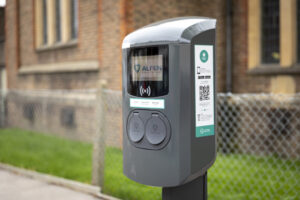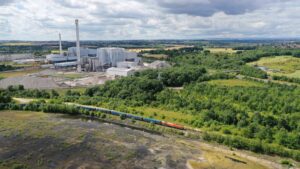Walking and cycling could prevent thousands of premature deaths
More than 13,000 premature deaths from air pollution could be prevented over the next decade if councils could get more people to walk and cycle, according to a new report.
The report out today, by the national charity Sustrans and the environmental consultancy Eunomia, claims that if targets to double journeys by bike and increase walking by 300 trips per person in the England’s Cycling and Walking Investment Strategy were met, more than 8,300 premature deaths from air pollution would be prevented.
It also claims this would boost the public purse by £5.67bn in over 10 years, mostly through the avoided costs associated with poor air quality, including NHS treatment in hospital for respiratory diseases.
Equally, it adds if the vision of 10% of everyday journeys by bike set out in Scotland’s Cycling Action Plan was realised, nearly 4,000 premature deaths would be avoided and £3.64bn of savings would be realised.
The two organisations have today released a model to measure air quality benefits from both reducing motor emissions due to shifting to walking or cycling, and changes in personal exposure to air pollution.
The model aims to support local authorities in making the case for investment in boosting walking and cycling and estimates the contribution of active travel in reducing levels of particulate matter and nitrogen dioxide, and the subsequent benefits to public health.
‘At a time when road transport is responsible for the majority of air quality limit breaches in the UK, it has never been more important to reduce the number of motorised vehicles on our roads,’ said Sustrans chief executive, Xavier Brice.
‘The new findings reiterate that walking and cycling has a huge role to play in tackling the air quality crisis that causes tens of thousands of premature deaths every year. If we are to make a major modal shift, we need to provide a network of direct protected cycle routes on roads in addition to quieter routes across the UK.
‘We’re urging governments at all levels to include funding for walking and cycling infrastructure in their clean air plans and the UK government to prioritise investment in active travel as part of wider urgent action to make air safe again,’ added Brice.
Junctions ‘hostile places’
The London Assembly’s transport committee has also published a report today, which claims many junctions in outer London have been designed for cars and deter people from walking or cycling to school, to work or to the shops.
The report – Hostile Streets – Walking and Cycling at Outer London Junctions – claims main roads and busy junctions make it more difficult for people to walk and cycle.
It recommends Transport for London (TfL) look beyond collisions data and consider potential to increase walking and cycling when selecting junctions to improve and review the speed limits on all its roads.
Assembly member, Caroline Russell, who released the report on behalf of the committee, said: ‘The reality our investigation uncovered, is that many roads in outer London sever communities and are hostile places for people getting about on foot and by bike.
‘While I’m pleased to see walking and cycling is at the forefront of the mayor’s Healthy Streets approach and draft transport strategy, there is a lot to be done in outer London where most of the untapped potential lies.
‘If the mayor is going to meet his target to get 80% of journeys made by walking, cycling and public transport by 2041, he must make it safer and more convenient to walk and cycle,’ added Ms Russell.
‘This means changing the culture at TfL and prioritising people, not cars, on London’s streets.’
Photo by kamshots 















